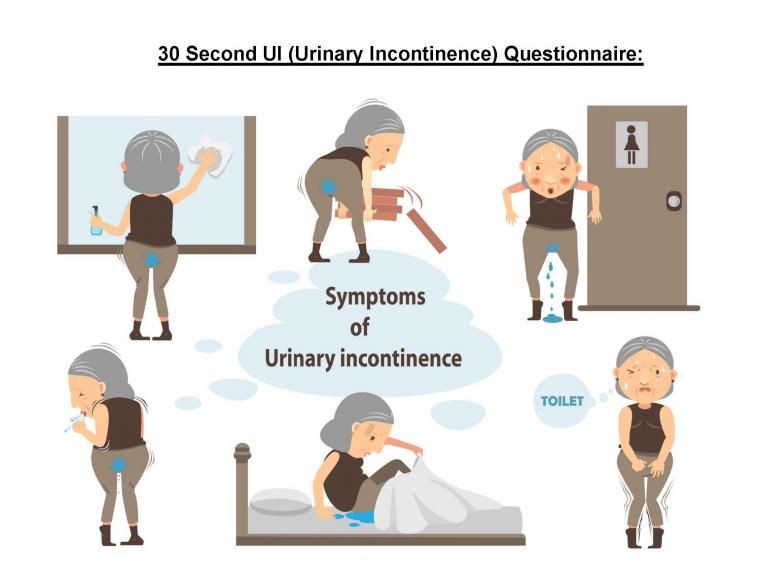
Contents
- 1 Urinary Incontinence in Children
- 1.0.1 What is urinary incontinence?
- 1.0.2 How does the urinary system work?
- 1.0.3 What are the types of urinary incontinence in children?
- 1.0.4 How common is urinary incontinence in children?
- 1.0.5 What causes nighttime incontinence in children?
- 1.0.6 What causes daytime incontinence in children?
- 1.0.7 How do you differentiate between organic and nonorganic causes of urinary incontinence?
- 1.0.8 What is the treatment for urinary incontinence in children?
- 1.0.9 What is the prognosis of urinary incontinence in children?
- 1.0.10 Where can people get more information on urinary incontinence in children?
Urinary Incontinence in Children
Most UTIs start when bacteria like E. coli reach the urethra and travel up to the bladder.
- Urinary incontinence in children is common.
- Nocturnal enuresis is more common than daytime wetting.
- Most urinary incontinence resolves without intervention.
- Persistent enuresis may require medical evaluation.
- Treatment for enuresis involves behavioral modification.
- Bedwetting alarms are effective.
- Medications should be reserved for select children.
- Less than 1% of affected children have persistent incontinence into adulthood.
What is urinary incontinence?
Urinary incontinence is the loss of control of urination or the involuntary emptying of the bladder, also known as enuresis. It can be caused by various factors, and is usually normal in infants and toddlers. Understanding the process of urination helps in understanding the different causes.
How does the urinary system work?
The urinary system consists of the kidneys, ureters, bladder, and urethra. Urine is produced by the kidneys and drains to the bladder through the ureters. The bladder stores the urine until it is emptied through urination. The process of emptying the bladder requires coordination between the brain, nerves, and muscles. The detrusor muscle contracts to squeeze urine out of the bladder, while the sphincter muscles keep urine in. Dysfunction in either muscle can lead to loss of urinary control. The urethra carries urine from the bladder during urination. Bladder control is learned and is normal in most young infants and children, but not in older children and adolescents.
What are the types of urinary incontinence in children?
Childhood enuresis can be divided into nocturnal enuresis (bedwetting) and diurnal enuresis (daytime). Nocturnal enuresis is the most common type in children over 5 years old, occurring during sleep. Diurnal enuresis is more common in younger children and is often a result of certain behaviors. Primary enuresis is when a child has never had a dry night, while secondary enuresis is when symptoms develop after at least six months of dryness.
How common is urinary incontinence in children?
Studies show that 20% of 5-year-olds and 10% of 7-year-olds wet the bed, and up to 20% of them also have some daytime incontinence. Nocturnal enuresis is more common in boys, while diurnal incontinence is more common in girls. Secondary enuresis accounts for about one-quarter of all cases and is often associated with psychological stress or anxiety.
What causes nighttime incontinence in children?
Nocturnal enuresis can be caused by various factors. It is more common in boys and is often unrelated to physical or emotional abnormalities. Developmental issues, increased urine production, and an inability to respond to bladder signals while asleep are some nonorganic causes. There is also a genetic disposition, with a 45% risk for a child if a parent experienced bedwetting. Organic causes, although less common, can include infection, anatomical abnormalities, neurologic abnormalities, and endocrine abnormalities like diabetes mellitus.
What causes daytime incontinence in children?
The most common causes of daytime wetting include voluntary holding of urine, urinary tract infection, constipation, and wetting with giggling. Girls are more commonly affected than boys. Less common causes include neurological and anatomical abnormalities as well as diabetes. Voluntary holding of urine is often observed in 3- to 5-year-olds who are too busy to use the toilet.
How do you differentiate between organic and nonorganic causes of urinary incontinence?
Most cases of urinary incontinence are nonorganic, but physicians may evaluate affected children with basic studies. Evaluation begins with a complete history and physical exam to differentiate between healthy children and those with underlying disease. The severity of symptoms can be evaluated through a voiding diary. A urinalysis can screen for organic causes, while ultrasound imaging may be needed for anatomical abnormalities. An MRI may be indicated if a neurological cause is suspected.
What is the treatment for urinary incontinence in children?
Treatment depends on the underlying cause. Behavioral modification is the primary treatment for bedwetting and involves positive reinforcement, encouraging daytime voiding, nighttime waking, and alarm therapy. Moisture alarms are effective and help children learn to respond to the alarm and empty their bladder. Medication should be reserved for select cases and used as a temporary solution. Most children outgrow enuresis and less than 1% have persistent symptoms.
What is the prognosis of urinary incontinence in children?
The prognosis depends on the cause, but most children with nonorganic enuresis outgrow the symptoms, with less than 1% having persistent incontinence into adulthood.
Where can people get more information on urinary incontinence in children?
American Urological Association Foundation
http://www.urologyhealth.org
By clicking "Submit," I agree to the MedicineNet Terms and Conditions and Privacy Policy. I also agree to receive emails from MedicineNet and I understand that I may opt out of MedicineNet subscriptions at any time.
Lane, W., and M. Robson. N Engl J Med 360 (2009): 1429-1436.
Levy, J. Pediatrics in Review. 30 (2009): 165-173.
Thiedke, C. Am Fam Physician. 67.7 Apr. 1, 2003: 1499-1506.


